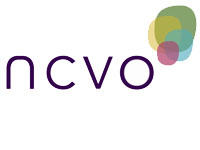Posted on September 16th, 2010 by Sarah Miller in Archived related news
Tagged as: social capital, social networks
2 Comments
The Royal Society for the Encouragement of the Arts, Manufacturers and Commerce (RSA) has just released an interim report on its Connected Communities project: Connected Communities: How social networks power and sustain the Big Society. This three-year project is exploring the value of a social-network approach to understanding communities and how they ‘tick’. The communities in question are in South East London and Bristol.
The report’s authors argue that deeper and more sophisticated knowledge of social networks in local areas can lead to more strategic and effective interventions to address local problems. They suggest that policies and programmes informed by a social network analysis could be more effective at linking the most and least connected groups; target and serve those who are most isolated in an area; encourage ‘pro-social’ behaviour change; and improve channels of communication between local authorities, public service providers, community organisations and residents themselves by using individuals and organisations that are already well-connected to help disseminate knowledge.
This is interesting stuff, all the more so because it raises a couple of questions for me. First, the study focuses more on the density and ‘form’ of the networks (how many links are there between one group of people and another), than on the content (what is it that actually brings people together), and quality of the relationships. But as anyone who has ever felt lonely in a room full of people knows, it’s not the quantity of the social connections that matter for one’s sense of well-being but the quality of those connections. Is increasing the number of social links and the diversity of people belonging to a network enough to bring about social change? How do we account for things like intimacy, reciprocity, and power relations in a social network approach to research and community regeneration?
Second, the project, rightly, presents social connectedness as an important end in itself, but how will increasing and strengthening social links address the structural causes of social isolation and weak social networks such as poverty and unemployment?
The second year of the Connected Communities project will test small-scale social interventions with residents in the research areas. It will be interesting to see how this practical, action research stage of the project builds on the theories and analysis introduced in this thought-provoking report, and whether it sheds any light on the questions I’ve raised here.


 ShareThis
ShareThis Subscribe to our project updates
Subscribe to our project updates



There was an interesting article in the Guardian last week about this report with a few quotes from Matthew Taylor: http://www.guardian.co.uk/society/2010/sep/15/big-society-community-networks
[...] exploring: ‘How social networks power and sustain the Big Society’. My colleague Sarah wrote a post on the original paper back in September, which argued ‘that deeper and more sophisticated [...]